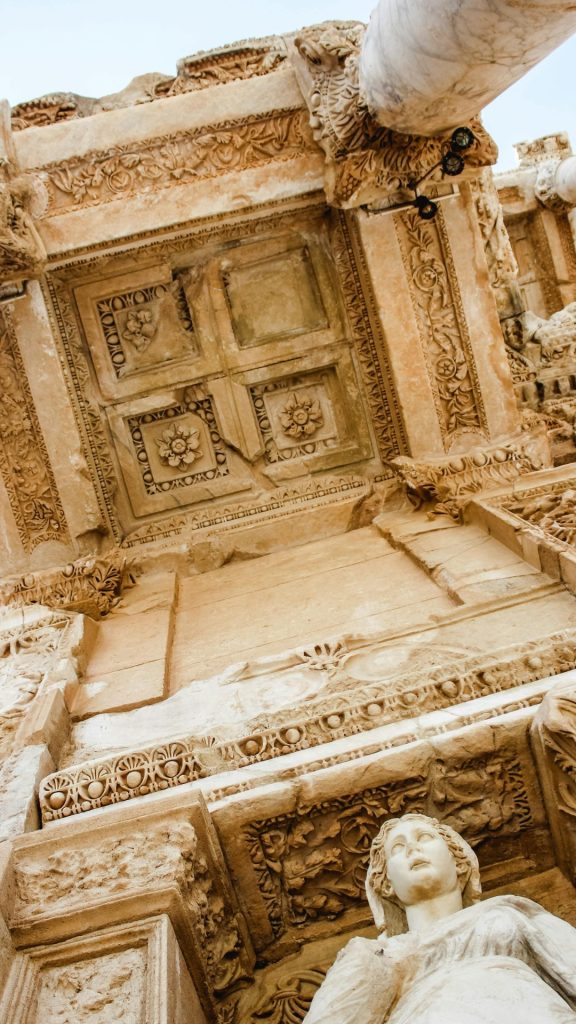Greek architecture is a style of building design that emerged in ancient Greece and has significantly influenced architectural traditions throughout history. The architectural achievements of the ancient Greeks are characterized by a focus on proportion, harmony, and a deep appreciation for the human form. Key elements of Greek architecture include:

- Columnar Orders:
- The Greeks developed three main types of columns, each with distinctive characteristics:
- Doric: Simple and sturdy, with a fluted shaft and a plain, capital (top).
- Ionic: More slender, with a capital adorned with volutes (scroll-like ornaments).
- Corinthian: Elaborate, featuring a capital decorated with acanthus leaves.
- The Greeks developed three main types of columns, each with distinctive characteristics:
- Entablature:
- The horizontal structure supported by columns, comprising the architrave, frieze, and cornice.
- Pediment:
- The triangular gable at the end of a building, often filled with sculptural decoration depicting mythological scenes.
- Stylobate:
- The uppermost step of the temple platform on which the columns stand.
- Peristyle:
- A colonnade or row of columns surrounding a building or courtyard.
- Caryatids and Atlantids:
- Sculpted female figures (Caryatids) or male figures (Atlantids) used as supporting columns.
- Greek Temples:
- Temples were a central architectural form. The Parthenon in Athens is one of the most famous examples, showcasing classical proportions and a Doric colonnade.
- Amphitheaters:
- Greek amphitheaters, like the Theater of Epidaurus, demonstrate advanced acoustics and seating arrangements for theatrical performances.
- Agora:
- Public squares surrounded by buildings where civic life, commerce, and social activities took place.
- Propylaea:
- Grand entrance gates, often monumental and adorned with columns, as seen in the Propylaea of the Acropolis.
- Monumental Statuary:
- The use of statues and sculptures, such as the bronze Statue of Zeus at Olympia and the Charioteer of Delphi, as expressions of artistic and religious ideals.
Greek architecture reached its zenith in the Classical period (5th to 4th century BCE), characterized by a quest for perfection and harmony. The principles and aesthetics of Greek architecture laid the foundation for classical architecture in ancient Rome and continue to inspire architectural design in the modern world. The legacy of Greek architecture is evident in government buildings, museums, and neoclassical structures around the globe.

